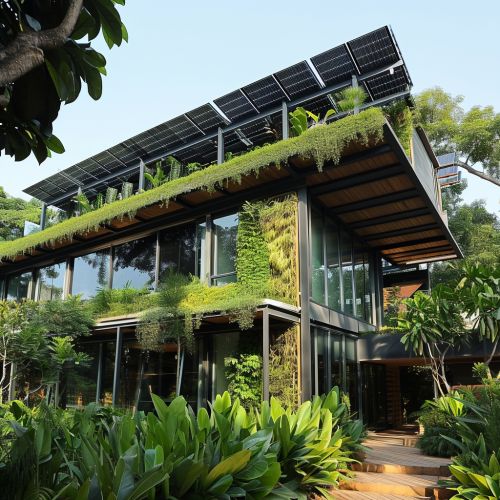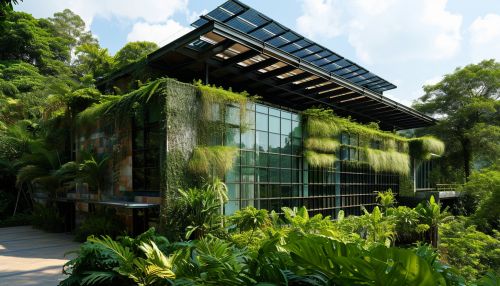Green building
Overview
A green building, also known as a sustainable building, refers to both a structure and the application of processes that are environmentally responsible and resource-efficient throughout a building's life-cycle: from planning to design, construction, operation, maintenance, renovation, and demolition. This requires close cooperation of the design team, the architects, the engineers, and the client at all project stages. The Green Building practice expands and complements the classical building design concerns of economy, utility, durability, and comfort.
History
The concept of sustainable development can be traced back to the energy (especially fossil oil) crisis and the environmental pollution concern in the 1970s. The green building movement in the U.S. originated from the need and desire for more energy efficient and environmentally friendly construction practices. There are a number of motives for building green, including environmental, economic, and social benefits. However, modern sustainability initiatives call for an integrated and synergistic design to both new construction and in the retrofitting of existing structures. Also known as sustainable design, this approach integrates the building life-cycle with each green practice employed with a design-purpose to create a synergy among the practices used.
Green building practices
Green building brings together a vast array of practices, techniques, and skills to reduce and ultimately eliminate the impacts of buildings on the environment and human health. It often emphasizes taking advantage of renewable resources, e.g., using sunlight through passive solar, active solar, and photovoltaic equipment, and using plants and trees through green roofs, rain gardens, and reduction of rainwater run-off. Many other techniques are used, such as using low impact building materials or using packed gravel or permeable concrete instead of conventional concrete or asphalt to enhance replenishment of ground water.
Building materials
The choice of materials for a green building is crucial for ensuring the building achieves its desired environmental goals. Green building materials are composed of renewable, rather than nonrenewable resources. Green materials are environmentally responsible because impacts are considered over the life of the product. Depending upon project-specific goals, an assessment of green materials may involve an evaluation of one or more of the criteria, such as energy efficiency, the value of reuse, or waste reduction.


Energy efficiency
Green buildings often include measures to reduce energy use. To increase the efficiency of the building envelope, (the barrier between conditioned and unconditioned space), they may use high-efficiency windows and insulation in walls, ceilings, and floors. Another strategy, passive solar building design, is often implemented in low-energy homes. Designers orient windows and walls and place awnings, porches, and trees to shade windows and roofs during the summer while maximizing solar gain in the winter. In addition, effective window placement (daylighting) can provide more natural light and lessen the need for electric lighting during the day. Solar water heating further reduces energy costs.
Water efficiency
Reducing water consumption and protecting water quality are key objectives in sustainable building. One critical issue of water consumption is that in many areas of the country, the demands on the supplying aquifer exceed its ability to replenish itself. To the maximum extent feasible, facilities should increase their dependence on water that is collected, used, purified, and reused on-site. The protection and conservation of water throughout the life of a building may be accomplished by designing for dual plumbing that recycles water in toilet flushing or by using water for washing of the cars.
Indoor environmental quality enhancement
The Indoor Environmental Quality (IEQ) category in LEED standards, one of the five environmental categories, was created to provide comfort, well-being, and productivity of occupants. The LEED IEQ category addresses design and construction guidelines especially as they relate to indoor environmental quality, including issues such as indoor air quality, lighting design, acoustic design, and control over systems. Goals of this standard are to enhance indoor air quality in buildings, promote the comfort and well-being of the occupants, and improve the productivity of workers.
Categories
See Also
Sustainable city Renewable energy Energy conservation Passive house Environmental design Eco-village
